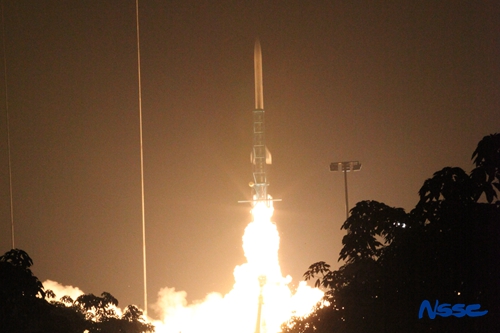At 2:00am, April 27, 2016, 863-program sounding rocket "Kunpeng-1B" for vertical sounding test of space environment was launched from the launching site of CAS Hainan Sounding Dept. in Danzhou City, Hainan Province, successfully gaining in-site sounding data of ionopause for the first time and reporting great success in test of multiple technologies. The fiber optic gyroscope developed independently by XIOPM Center for Optical Fiber Inertia Surveying and Transduction was successfully applied in the vertical sounding test of space environment once again after successful completion of China’s vertical sounding space environment and the first space science active experiment on April 5, 2013, remarkably achieving "Kunpeng-1B"attitude test task and making another contribution to China’s space environment sounding.

It is known that sounding rocket is an effective sounding tool for space sounding and scientific test, and characterized by advantages of lost cost, short development cycle and less limitation to launch time compared with other sounding approaches. Using sounding rocket can realize vertical sounding of structural composition of atmospheres and parameters, and research ionosphere, geomagnetic field, cosmic ray, solar ultraviolet and X ray, meteoric dust and other sun-earth physical phenomena in direction of height. Meanwhile, it can provide corresponding background information for development of space tourism and super-high-speed air vehicle in the space of the ionosphere in the future.
In this launch, fiber optic gyroscope as a key component in attitude control system real-timed measured rocket parameters of angular velocity and linear velocity, etc, real-time transmitted to the ground the information on attitude and angle of yaw of rocket flying, successfully completed rocket attitude tracking and measurement task, and powerfully guaranteed the sounding rocket to accurately collect space magnetic field and electric field vector data and space environment information on low-latitude region mid-upper-level atmosphere in ionosphere.
Successful completion of this test marks a breakthrough once again of our institute’s fiber optic gyroscope in operating height and environmental adaptability and stability in near space environment and lays solid foundation for application of our fiber optic gyroscope in space fields in the future.


